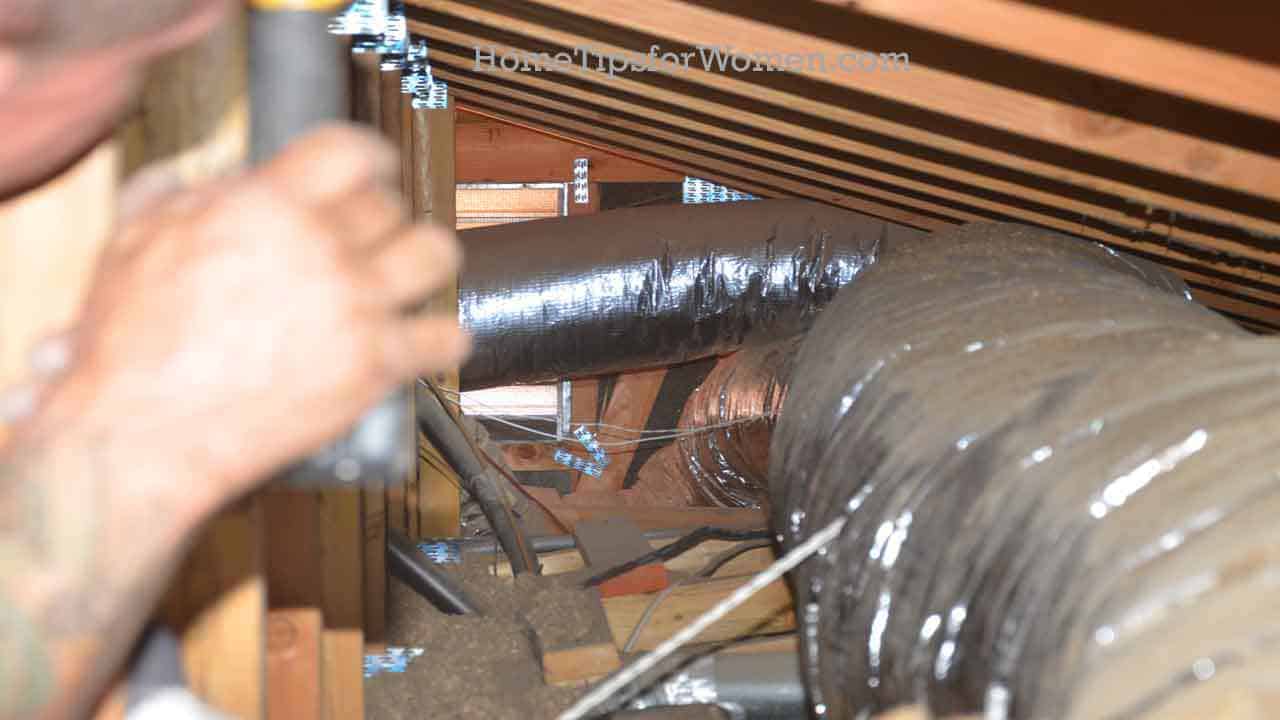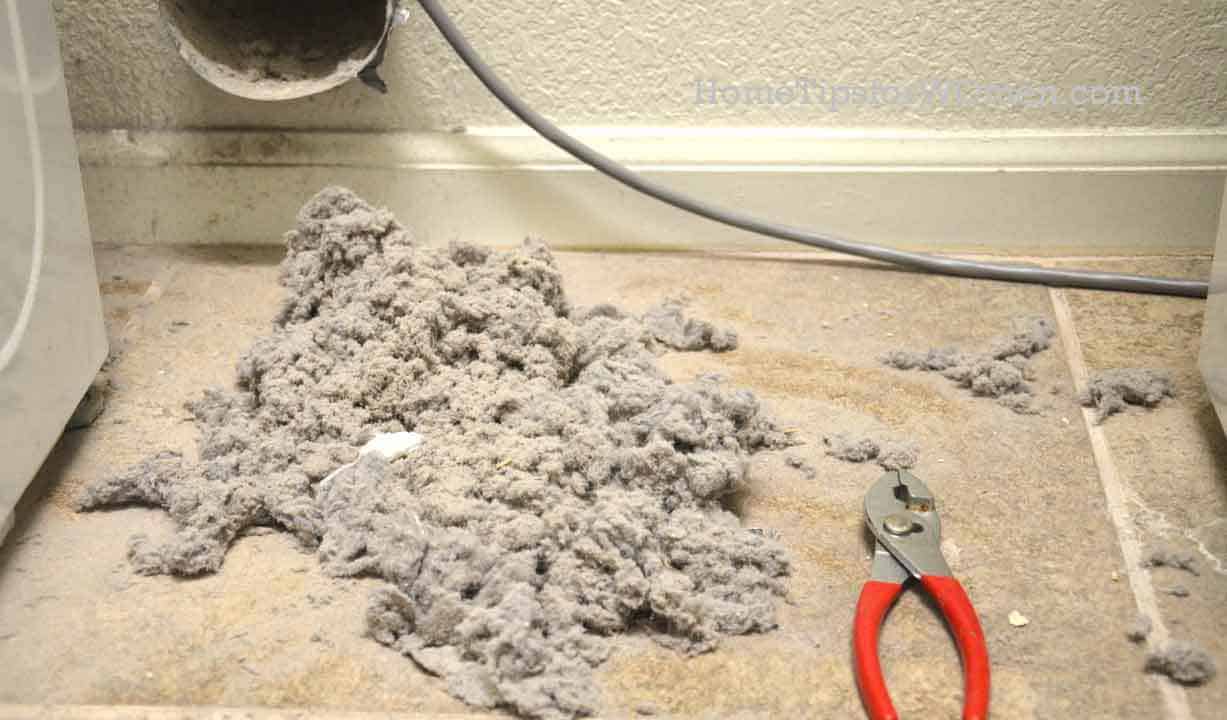
It's winter, we've had the house in Arizona for two years now so it was time to clean the dryer vent. What should have been an easy project has turned into a mess and I'm not happy about it. All I had planned to write about in this blog post was how to clean a dryer vent.
Instead I feel like I'm back running a handyman business and dealing with construction issues. The problem is we have no idea where the dryer vent exits the house. That means the vent probably ends in the attic, a common builder shortcut to save money. While lint in an unfinished attic isn't a huge problem, the moisture in the air is a problem (remember dryers remove water from your clothes). This moisture can reduce the effectiveness of your insulation and if the ventilation isn't adequate, there is the possibility of mold growing.
There's also a safety issue. According to the US Fire Administration, “An estimated 2,900 clothes dryer fires in residential buildings are reported to U.S. fire departments each yea, causing an estimated 5 deaths, 100 injuries, and $35 million in property loss. Failure to clean (34 percent) was the leading factor contributing to the ignition of clothes dryer fires in residential buildings.”
Where Does the Dryer Vent Exhaust Out?
Now that you understand why dryer vents can't be ignored, let me share more insight into best practices for installing dryer vents. Why best practices? Because building codes are difficult to decipher and they vary by state and sometimes local ordinances. For example, my handyman business got lots of jobs when New Hampshire required rigid vents versus the accordion style that traps lint in it's folds.
The dryer vent connectors below illustrate the different types of venting available. New Hampshire made the flexible venting (on the left) illegal. My handyman business replaced at least 40 of these inexpensive and unsafe vents. When Lowe's delivered and installed our new dryer, they tried to use the flexible connector. I told the installer no, that this was not legal in New Hampshire and I wouldn't accept it in Arizona.
After showing him the receipt proving my husband had ordered the vent tite kit, he miraculously found the kit in his truck. My guess is he purposely didn't bring the right connector in with his tools, because it's harder to install and he was trying to save time.
Flexible Clothes Dryer Connector Semi-Rigid Dryer Vent Hook Up Kit
Semi-Rigid Dryer Vent Hook Up Kit Dryer Vent Tite Fit, 90 Degree 18
Dryer Vent Tite Fit, 90 Degree 18
How do you know if your dryer vent is safe? Here are the dryer vent safety guidelines from the International Association of Certified Home Inspectors (InterNACHI).
- Make sure the connection between your dryer and the vent is secure. Only use a high temperature, UL approved tape to seal the seams.
- Make sure the air flow is not restricted. Flexible ducts can get crushed and restrict air flow, which is why rigid venting is better (or use specially designed elbows).
- Exhaust ducts should be made from rigid metal (minimum of 0.016 inches). They should have smooth interior surfaces and no screws should extend into the duct.
- Dryer vents should not exceed 25 feet from the dryer to the wall or roof where the exhaust leaves the house. And here's where it gets interesting:
- For each 45 degree bend, subtract 2.5 feet from the length of the duct.
- For each 90 degree bend, subtract 5 feet from the total length of the exhaust duct.
- Exhaust ducts must terminate on the outside of the building, at least 3 feet from any openings like windows or doors.
- Transition ducts between the dryer and the vent entry, must not be concealed. They should also be limited to 8 feet or less, using materials with UL
So clearly my dryer vent doesn't satisfy these guidelines. There's a 90 degree angle where the vent tips up inside the wall and it's almost 13 feet to the attic. This leaves 7 feet in the attic. A straight vertical run to and through the roof would work, but I'm not inclined to punch through a tile roof.
We'll update you once we find the end of the dryer vent and finish the installation, to move that air outside. My husband is still wearing his walking cast so we have to wait for that to heal. For now, here's what we've done …




How to Clean a Dryer Vent
Most homeowners think cleaning the dryer vent is nothing more than the lint filter. That's one of three places where you need to remove lint from your dryer and it's vent. So here are the three steps you need to take at least once a year, or more if you're running your dryer several times each day.
- Clean the lint filter every time you use the dryer. You already know and do this and yes, I purposely didn't so I'd have more lint for my photo.
- Clean the dryer cavity where the lint filter sits, to get rid of lint that isn't caught by the filter. If you keep your lint brush handy, you can do this monthly.
- Clean the dryer vent from where it leaves the dryer, to where the air, lint and moisture leaves your home.



How to Clean a Dryer Vent Starts with the Right Tools
This is a new house and oops, I left my dryer vent brush behind my old dryer. That meant some research and a trip to the store. I decided to get the LintEater Rotary Dryer Vent Cleaning Kit because we have really tall ceilings, making it difficult to maneuver manually. Their system provides brushes for steps 2 and 3, plus extension pieces so we went up 15 feet for now.
Here's what you'll find in the LintEater Dryer Vent Cleaning Kit:
- Long vent brush for getting into the dryer cavity (step 2).
- Short rotating brush that cleans off the interior surface of the dryer vent (step 3).
- Flexible rods (3 ft increments) to work through your entire vent system (step 3). There's also hardware so you can attach your power drill to the rods.
- Blockage tool if you find a clog somewhere in your dryer vent (step 3).
- Components to allow you to attach your Wet Dry Vac to the dryer vent opening, to catch the lint as you clean it out.



So the actual task of cleaning the dryer vent isn't that difficult. Probably the biggest challenge is moving the dryer to access the vent and please, don't forget to unplug the dryer. This is also a job better done by two people, or at least the heavy lifting as dryers unlike refrigerators, aren't made to roll out … so thanks to my husband for lending a helping hand!
Ready to clean your dryer vent?








Leave a Reply